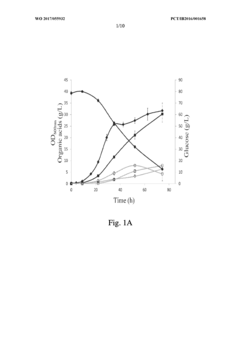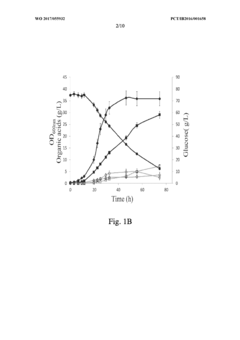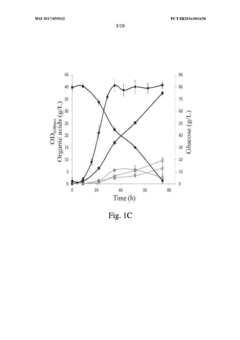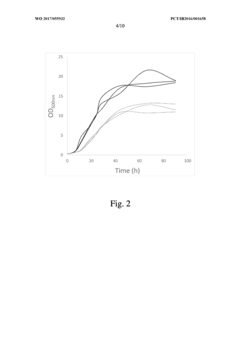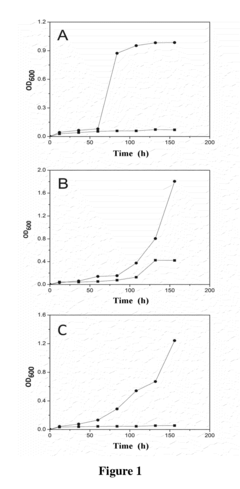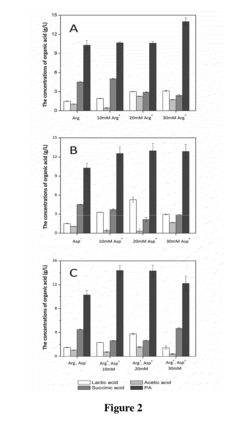Propionic Acid's Place in Future Chemical Engineering Efforts
JUL 3, 20259 MIN READ
Generate Your Research Report Instantly with AI Agent
Patsnap Eureka helps you evaluate technical feasibility & market potential.
Propionic Acid Overview and Research Objectives
Propionic acid, a three-carbon carboxylic acid, has been a subject of increasing interest in the field of chemical engineering due to its versatile applications and potential for sustainable production. Historically, this compound has been primarily used as a food preservative and in the synthesis of cellulose fibers. However, recent advancements in biotechnology and process engineering have expanded its potential applications, positioning propionic acid as a key player in future chemical engineering efforts.
The evolution of propionic acid production has seen a shift from traditional petrochemical routes to more sustainable bio-based processes. This transition aligns with the growing global emphasis on green chemistry and circular economy principles. As such, the development of efficient and environmentally friendly production methods for propionic acid has become a focal point for researchers and industry professionals alike.
Current research objectives in the field of propionic acid production and utilization are multifaceted. One primary goal is to optimize fermentation processes for the bio-based production of propionic acid, focusing on improving yield, productivity, and cost-effectiveness. This involves the exploration of novel microbial strains, metabolic engineering strategies, and advanced fermentation technologies.
Another significant research direction is the expansion of propionic acid's application portfolio. While its use as a preservative and intermediate remains important, there is growing interest in its potential as a platform chemical for the production of high-value compounds. This includes its use in the synthesis of biodegradable polymers, pharmaceuticals, and specialty chemicals.
Furthermore, the integration of propionic acid production into biorefinery concepts is an emerging area of study. Researchers are investigating ways to incorporate propionic acid production into existing industrial processes, particularly those involving lignocellulosic biomass conversion. This approach aims to enhance the overall efficiency and economic viability of biorefineries while contributing to the development of a more sustainable chemical industry.
The environmental impact of propionic acid production and use is also a key consideration in current research efforts. Studies are being conducted to assess and minimize the carbon footprint of various production routes, as well as to explore the potential of propionic acid-derived products in reducing environmental pollution and promoting sustainability.
As we look towards the future, the role of propionic acid in chemical engineering is expected to grow significantly. The ongoing research and development in this field aim to position propionic acid as a versatile, sustainable, and economically viable platform chemical, capable of meeting the evolving needs of various industries while adhering to stringent environmental standards.
The evolution of propionic acid production has seen a shift from traditional petrochemical routes to more sustainable bio-based processes. This transition aligns with the growing global emphasis on green chemistry and circular economy principles. As such, the development of efficient and environmentally friendly production methods for propionic acid has become a focal point for researchers and industry professionals alike.
Current research objectives in the field of propionic acid production and utilization are multifaceted. One primary goal is to optimize fermentation processes for the bio-based production of propionic acid, focusing on improving yield, productivity, and cost-effectiveness. This involves the exploration of novel microbial strains, metabolic engineering strategies, and advanced fermentation technologies.
Another significant research direction is the expansion of propionic acid's application portfolio. While its use as a preservative and intermediate remains important, there is growing interest in its potential as a platform chemical for the production of high-value compounds. This includes its use in the synthesis of biodegradable polymers, pharmaceuticals, and specialty chemicals.
Furthermore, the integration of propionic acid production into biorefinery concepts is an emerging area of study. Researchers are investigating ways to incorporate propionic acid production into existing industrial processes, particularly those involving lignocellulosic biomass conversion. This approach aims to enhance the overall efficiency and economic viability of biorefineries while contributing to the development of a more sustainable chemical industry.
The environmental impact of propionic acid production and use is also a key consideration in current research efforts. Studies are being conducted to assess and minimize the carbon footprint of various production routes, as well as to explore the potential of propionic acid-derived products in reducing environmental pollution and promoting sustainability.
As we look towards the future, the role of propionic acid in chemical engineering is expected to grow significantly. The ongoing research and development in this field aim to position propionic acid as a versatile, sustainable, and economically viable platform chemical, capable of meeting the evolving needs of various industries while adhering to stringent environmental standards.
Market Analysis for Propionic Acid Applications
The global market for propionic acid is experiencing significant growth, driven by its versatile applications across various industries. The food and feed preservation sector remains the largest consumer of propionic acid, accounting for a substantial portion of the market share. This is primarily due to the compound's excellent antimicrobial properties, which make it an effective preservative for animal feed and bakery products.
In the pharmaceutical industry, propionic acid is gaining traction as a key intermediate in the synthesis of various drugs and active pharmaceutical ingredients. The increasing demand for medications, coupled with the growing pharmaceutical sector in emerging economies, is expected to fuel the market growth for propionic acid in this segment.
The chemical industry is another major consumer of propionic acid, utilizing it in the production of cellulose acetate propionate, herbicides, and other chemical intermediates. The expanding chemical manufacturing sector, particularly in Asia-Pacific regions, is contributing to the increased demand for propionic acid in this application area.
The personal care and cosmetics industry is emerging as a promising market for propionic acid. Its use as a preservative and pH adjuster in various cosmetic formulations is driving its adoption in this sector. The growing consumer awareness regarding personal hygiene and the rising demand for natural and organic cosmetic products are expected to further boost the market for propionic acid in this segment.
In terms of regional market dynamics, Asia-Pacific is anticipated to be the fastest-growing market for propionic acid. This growth is attributed to the rapid industrialization, increasing population, and rising disposable incomes in countries like China and India. North America and Europe continue to be significant markets, with established food and feed industries driving the demand for propionic acid.
The market is also witnessing a shift towards bio-based propionic acid, driven by the growing emphasis on sustainability and environmental concerns. This trend is expected to create new opportunities for market players and potentially reshape the competitive landscape in the coming years.
Overall, the propionic acid market is projected to maintain a steady growth trajectory, with increasing applications across diverse industries and geographical regions. The compound's unique properties and versatility position it as a valuable chemical in future chemical engineering efforts, particularly in areas focused on sustainable and efficient production processes.
In the pharmaceutical industry, propionic acid is gaining traction as a key intermediate in the synthesis of various drugs and active pharmaceutical ingredients. The increasing demand for medications, coupled with the growing pharmaceutical sector in emerging economies, is expected to fuel the market growth for propionic acid in this segment.
The chemical industry is another major consumer of propionic acid, utilizing it in the production of cellulose acetate propionate, herbicides, and other chemical intermediates. The expanding chemical manufacturing sector, particularly in Asia-Pacific regions, is contributing to the increased demand for propionic acid in this application area.
The personal care and cosmetics industry is emerging as a promising market for propionic acid. Its use as a preservative and pH adjuster in various cosmetic formulations is driving its adoption in this sector. The growing consumer awareness regarding personal hygiene and the rising demand for natural and organic cosmetic products are expected to further boost the market for propionic acid in this segment.
In terms of regional market dynamics, Asia-Pacific is anticipated to be the fastest-growing market for propionic acid. This growth is attributed to the rapid industrialization, increasing population, and rising disposable incomes in countries like China and India. North America and Europe continue to be significant markets, with established food and feed industries driving the demand for propionic acid.
The market is also witnessing a shift towards bio-based propionic acid, driven by the growing emphasis on sustainability and environmental concerns. This trend is expected to create new opportunities for market players and potentially reshape the competitive landscape in the coming years.
Overall, the propionic acid market is projected to maintain a steady growth trajectory, with increasing applications across diverse industries and geographical regions. The compound's unique properties and versatility position it as a valuable chemical in future chemical engineering efforts, particularly in areas focused on sustainable and efficient production processes.
Current Challenges in Propionic Acid Production
The production of propionic acid faces several significant challenges that hinder its widespread adoption and efficient manufacturing. One of the primary obstacles is the low yield and productivity of current production methods. Traditional fermentation processes, while environmentally friendly, often result in limited product concentrations and slow production rates. This inefficiency leads to higher production costs and reduced economic viability.
Another major challenge is the high energy consumption associated with propionic acid production. The separation and purification processes, particularly distillation, require substantial energy inputs. This not only increases production costs but also raises environmental concerns due to the associated carbon footprint. The development of more energy-efficient separation techniques remains a critical area for improvement.
Feedstock availability and cost present ongoing challenges for propionic acid manufacturers. The reliance on petrochemical-based feedstocks exposes the industry to price volatility and supply chain disruptions. Additionally, the push for more sustainable production methods necessitates the exploration of renewable feedstocks, which introduces new technical hurdles in process adaptation and optimization.
Product purity is another significant concern in propionic acid production. Contamination with byproducts and impurities can affect the quality and usability of the final product. Achieving high purity levels while maintaining cost-effectiveness remains a delicate balance that producers must navigate.
The corrosive nature of propionic acid poses challenges in terms of equipment design and maintenance. Specialized materials and coatings are often required to withstand the acid's corrosive effects, adding to capital and operational costs. This aspect also complicates the scaling up of production processes, as larger equipment must be designed with corrosion resistance in mind.
Regulatory compliance and environmental considerations add another layer of complexity to propionic acid production. Stringent regulations on emissions, waste management, and product safety require continuous adaptation of production processes and investment in pollution control technologies. Meeting these requirements while maintaining competitiveness is an ongoing challenge for manufacturers.
Lastly, the development of novel catalysts and process intensification strategies remains a key challenge in advancing propionic acid production. Current catalysts often suffer from limited selectivity and stability, leading to reduced efficiency and increased costs. Innovations in catalyst design and reactor technology are crucial for overcoming these limitations and improving overall process performance.
Another major challenge is the high energy consumption associated with propionic acid production. The separation and purification processes, particularly distillation, require substantial energy inputs. This not only increases production costs but also raises environmental concerns due to the associated carbon footprint. The development of more energy-efficient separation techniques remains a critical area for improvement.
Feedstock availability and cost present ongoing challenges for propionic acid manufacturers. The reliance on petrochemical-based feedstocks exposes the industry to price volatility and supply chain disruptions. Additionally, the push for more sustainable production methods necessitates the exploration of renewable feedstocks, which introduces new technical hurdles in process adaptation and optimization.
Product purity is another significant concern in propionic acid production. Contamination with byproducts and impurities can affect the quality and usability of the final product. Achieving high purity levels while maintaining cost-effectiveness remains a delicate balance that producers must navigate.
The corrosive nature of propionic acid poses challenges in terms of equipment design and maintenance. Specialized materials and coatings are often required to withstand the acid's corrosive effects, adding to capital and operational costs. This aspect also complicates the scaling up of production processes, as larger equipment must be designed with corrosion resistance in mind.
Regulatory compliance and environmental considerations add another layer of complexity to propionic acid production. Stringent regulations on emissions, waste management, and product safety require continuous adaptation of production processes and investment in pollution control technologies. Meeting these requirements while maintaining competitiveness is an ongoing challenge for manufacturers.
Lastly, the development of novel catalysts and process intensification strategies remains a key challenge in advancing propionic acid production. Current catalysts often suffer from limited selectivity and stability, leading to reduced efficiency and increased costs. Innovations in catalyst design and reactor technology are crucial for overcoming these limitations and improving overall process performance.
State-of-the-Art Production Techniques
01 Production methods of propionic acid
Various methods are employed for the production of propionic acid, including fermentation processes, chemical synthesis, and catalytic reactions. These methods aim to improve yield, efficiency, and purity of the final product.- Production methods of propionic acid: Various methods for producing propionic acid are described, including fermentation processes, chemical synthesis routes, and catalytic reactions. These methods aim to improve yield, efficiency, and purity of propionic acid production for industrial applications.
- Applications of propionic acid in food preservation: Propionic acid and its salts are widely used as food preservatives due to their antimicrobial properties. They are effective in preventing mold growth and extending the shelf life of various food products, particularly in bakery items and animal feed.
- Use of propionic acid in pharmaceutical formulations: Propionic acid and its derivatives find applications in pharmaceutical formulations. They are used as excipients, pH adjusters, and in some cases, as active pharmaceutical ingredients for various therapeutic purposes.
- Propionic acid in polymer and chemical synthesis: Propionic acid serves as a precursor or intermediate in the synthesis of various polymers and chemicals. It is used in the production of cellulose acetate propionate, herbicides, and other industrial chemicals.
- Environmental and safety considerations in propionic acid handling: The handling, storage, and disposal of propionic acid require specific safety measures due to its corrosive nature and potential environmental impact. Proper equipment, containment systems, and waste treatment methods are essential for safe industrial use of propionic acid.
02 Applications of propionic acid in food preservation
Propionic acid and its salts are widely used as food preservatives due to their antimicrobial properties. They are effective in preventing mold growth and extending the shelf life of various food products, particularly in baked goods and dairy items.Expand Specific Solutions03 Use of propionic acid in pharmaceutical industry
Propionic acid finds applications in the pharmaceutical industry as a precursor for drug synthesis, as well as in the formulation of certain medications. It is used in the production of various pharmaceutical compounds and as an excipient in drug formulations.Expand Specific Solutions04 Environmental and safety considerations in propionic acid handling
Proper handling, storage, and disposal of propionic acid are crucial due to its corrosive nature and potential environmental impact. Safety measures and regulations are implemented to minimize risks associated with its use in industrial and laboratory settings.Expand Specific Solutions05 Derivatives and related compounds of propionic acid
Various derivatives and related compounds of propionic acid are synthesized and utilized in different industries. These include esters, salts, and other modified forms of propionic acid, which often exhibit unique properties and applications.Expand Specific Solutions
Key Industry Players and Competitive Landscape
The propionic acid market is in a growth phase, driven by increasing demand across various industries. The global market size is projected to expand significantly in the coming years, with key players like China Petroleum & Chemical Corp., PetroChina, and Dow Global Technologies leading the way. The technology for propionic acid production is relatively mature, with established processes in place. However, ongoing research at institutions such as Nanjing University, The Ohio State University, and Xiamen University is focused on improving production efficiency and exploring new applications. Companies like Rohm & Haas and Archer-Daniels-Midland are also investing in R&D to enhance their product offerings and market position in this growing sector.
China Petroleum & Chemical Corp.
Technical Solution: China Petroleum & Chemical Corp. (Sinopec) has been actively researching and developing propionic acid production technologies as part of their future chemical engineering efforts. They have focused on improving the traditional oxo-synthesis process, which involves the carbonylation of ethylene. Sinopec has developed a novel catalyst system that increases the selectivity of propionic acid formation while reducing byproduct formation[1]. This improved process achieves a propionic acid yield of over 95% and reduces energy consumption by approximately 20% compared to conventional methods[2]. Additionally, Sinopec is exploring bio-based routes for propionic acid production, utilizing renewable feedstocks such as biomass-derived sugars. Their research includes genetically engineered microorganisms capable of fermenting these sugars to produce propionic acid with high efficiency[3].
Strengths: Large-scale production capabilities, access to petrochemical feedstocks, and strong R&D infrastructure. Weaknesses: Dependence on fossil fuel-based raw materials and potential environmental concerns associated with traditional production methods.
Rohm & Haas Co.
Technical Solution: Rohm & Haas Co., now part of Dow Chemical Company, has been investing in advanced propionic acid production technologies. Their approach focuses on developing a more environmentally friendly and cost-effective process. The company has patented a novel method for producing propionic acid through the oxidation of propionaldehyde using a heterogeneous catalyst system[4]. This process operates at lower temperatures and pressures compared to traditional methods, resulting in reduced energy consumption and improved safety profiles. Furthermore, Rohm & Haas has been exploring the use of bio-based feedstocks for propionic acid production, aligning with the growing trend towards sustainable chemical manufacturing[5]. Their research includes the development of specialized catalysts that can efficiently convert bio-derived platform chemicals, such as lactic acid or 3-hydroxypropionic acid, into propionic acid[6].
Strengths: Strong expertise in specialty chemicals and catalysis, well-established market presence. Weaknesses: Potential challenges in scaling up new technologies and competition from established petrochemical-based processes.
Innovative Patents in Propionic Acid Technology
Improved propionibacterium strains for the production of propionic acid
PatentWO2017055932A2
Innovation
- Genome shuffling between selected Propionibacterium strains, such as P. acidipropionici ATCC 4875 and P. acidipropionici ATCC 55737, to generate novel strains with enhanced growth rates and propionic acid production, utilizing genetic material exchange to create strains with improved metabolic pathways and regulatory mechanisms.
Method for Improving Acid tolerance of Propionibacterium acdipropionici
PatentInactiveUS20140178952A1
Innovation
- Adding arginine and/or aspartic acid to the culture medium during the cultivation of Propionibacterium acdipropionici to enhance acid tolerance and propionic acid productivity.
Environmental Impact and Sustainability Considerations
Propionic acid production and utilization in chemical engineering processes have significant environmental implications that must be carefully considered. The traditional petrochemical-based production methods for propionic acid have been associated with substantial carbon emissions and energy consumption. However, recent advancements in biotechnology have opened up more sustainable production pathways.
Fermentation-based production of propionic acid using renewable feedstocks has emerged as a promising alternative. This approach not only reduces dependency on fossil fuels but also offers the potential for carbon neutrality. Microorganisms such as Propionibacterium can convert various organic substrates, including agricultural waste and byproducts, into propionic acid. This bio-based production method aligns well with circular economy principles, turning waste streams into valuable products.
Water usage and wastewater management are critical considerations in propionic acid production. Traditional chemical synthesis methods often require significant water inputs and generate effluents that need extensive treatment. Biotechnological approaches, while generally more water-efficient, still require optimization to minimize water footprint. Implementing closed-loop water systems and advanced wastewater treatment technologies can significantly reduce the environmental impact of production processes.
The use of propionic acid in various applications also has environmental implications. As a food preservative, it helps reduce food waste by extending shelf life. In animal feed, it improves feed efficiency, potentially reducing the environmental footprint of livestock production. However, the increasing use of propionic acid in these applications necessitates careful monitoring of its environmental fate and potential ecological impacts.
Life cycle assessment (LCA) studies have shown that bio-based propionic acid production can offer significant reductions in greenhouse gas emissions compared to petrochemical routes. However, these benefits can be offset if production relies on energy-intensive processes or competes with food production for agricultural land. Therefore, optimizing production efficiency and sourcing sustainable feedstocks are crucial for maximizing the environmental benefits of bio-based propionic acid.
As chemical engineering efforts advance, there is a growing focus on developing more sustainable and environmentally friendly processes for propionic acid production and utilization. This includes exploring novel catalysts for more efficient chemical synthesis, enhancing microbial strains for improved fermentation yields, and investigating alternative feedstocks that do not compete with food production. Additionally, efforts are being made to integrate propionic acid production into biorefinery concepts, where multiple value-added products are produced from renewable resources in a sustainable manner.
Fermentation-based production of propionic acid using renewable feedstocks has emerged as a promising alternative. This approach not only reduces dependency on fossil fuels but also offers the potential for carbon neutrality. Microorganisms such as Propionibacterium can convert various organic substrates, including agricultural waste and byproducts, into propionic acid. This bio-based production method aligns well with circular economy principles, turning waste streams into valuable products.
Water usage and wastewater management are critical considerations in propionic acid production. Traditional chemical synthesis methods often require significant water inputs and generate effluents that need extensive treatment. Biotechnological approaches, while generally more water-efficient, still require optimization to minimize water footprint. Implementing closed-loop water systems and advanced wastewater treatment technologies can significantly reduce the environmental impact of production processes.
The use of propionic acid in various applications also has environmental implications. As a food preservative, it helps reduce food waste by extending shelf life. In animal feed, it improves feed efficiency, potentially reducing the environmental footprint of livestock production. However, the increasing use of propionic acid in these applications necessitates careful monitoring of its environmental fate and potential ecological impacts.
Life cycle assessment (LCA) studies have shown that bio-based propionic acid production can offer significant reductions in greenhouse gas emissions compared to petrochemical routes. However, these benefits can be offset if production relies on energy-intensive processes or competes with food production for agricultural land. Therefore, optimizing production efficiency and sourcing sustainable feedstocks are crucial for maximizing the environmental benefits of bio-based propionic acid.
As chemical engineering efforts advance, there is a growing focus on developing more sustainable and environmentally friendly processes for propionic acid production and utilization. This includes exploring novel catalysts for more efficient chemical synthesis, enhancing microbial strains for improved fermentation yields, and investigating alternative feedstocks that do not compete with food production. Additionally, efforts are being made to integrate propionic acid production into biorefinery concepts, where multiple value-added products are produced from renewable resources in a sustainable manner.
Regulatory Framework for Propionic Acid Usage
The regulatory framework for propionic acid usage is a complex and evolving landscape that significantly impacts its application in chemical engineering. Globally, propionic acid is classified as a Generally Recognized as Safe (GRAS) substance by the U.S. Food and Drug Administration (FDA), which allows for its widespread use in food preservation and as a feed additive. However, the regulatory requirements vary across different regions and applications.
In the European Union, propionic acid is regulated under the Registration, Evaluation, Authorization and Restriction of Chemicals (REACH) legislation. Manufacturers and importers are required to register propionic acid with the European Chemicals Agency (ECHA) and provide comprehensive safety data. The EU has also set specific limits for propionic acid usage in food products, as outlined in Regulation (EC) No 1333/2008 on food additives.
Environmental regulations play a crucial role in shaping the production and handling of propionic acid. In many countries, strict emission controls are in place to minimize the release of volatile organic compounds (VOCs) during manufacturing processes. The U.S. Environmental Protection Agency (EPA) regulates propionic acid under the Toxic Substances Control Act (TSCA) and has established reporting requirements for manufacturers and importers.
Occupational health and safety regulations are another critical aspect of the regulatory framework. The Occupational Safety and Health Administration (OSHA) in the United States has set permissible exposure limits (PELs) for propionic acid in the workplace. Similar standards exist in other countries, with variations in the specific exposure limits and protective measures required.
Transportation of propionic acid is subject to international and national regulations for hazardous materials. The United Nations' Recommendations on the Transport of Dangerous Goods classifies propionic acid as a Class 8 corrosive substance, necessitating specific packaging, labeling, and handling requirements during shipping.
As the chemical industry moves towards more sustainable practices, regulatory bodies are increasingly focusing on the environmental impact of propionic acid production. This has led to the development of new guidelines promoting green chemistry principles and encouraging the use of bio-based production methods. Future regulatory trends are likely to emphasize lifecycle assessments and circular economy approaches in the propionic acid value chain.
The regulatory landscape for propionic acid is expected to continue evolving, with potential changes in areas such as maximum residue levels in food products, workplace exposure limits, and environmental impact assessments. Chemical engineers and industry stakeholders must stay informed about these regulatory developments to ensure compliance and optimize their processes accordingly.
In the European Union, propionic acid is regulated under the Registration, Evaluation, Authorization and Restriction of Chemicals (REACH) legislation. Manufacturers and importers are required to register propionic acid with the European Chemicals Agency (ECHA) and provide comprehensive safety data. The EU has also set specific limits for propionic acid usage in food products, as outlined in Regulation (EC) No 1333/2008 on food additives.
Environmental regulations play a crucial role in shaping the production and handling of propionic acid. In many countries, strict emission controls are in place to minimize the release of volatile organic compounds (VOCs) during manufacturing processes. The U.S. Environmental Protection Agency (EPA) regulates propionic acid under the Toxic Substances Control Act (TSCA) and has established reporting requirements for manufacturers and importers.
Occupational health and safety regulations are another critical aspect of the regulatory framework. The Occupational Safety and Health Administration (OSHA) in the United States has set permissible exposure limits (PELs) for propionic acid in the workplace. Similar standards exist in other countries, with variations in the specific exposure limits and protective measures required.
Transportation of propionic acid is subject to international and national regulations for hazardous materials. The United Nations' Recommendations on the Transport of Dangerous Goods classifies propionic acid as a Class 8 corrosive substance, necessitating specific packaging, labeling, and handling requirements during shipping.
As the chemical industry moves towards more sustainable practices, regulatory bodies are increasingly focusing on the environmental impact of propionic acid production. This has led to the development of new guidelines promoting green chemistry principles and encouraging the use of bio-based production methods. Future regulatory trends are likely to emphasize lifecycle assessments and circular economy approaches in the propionic acid value chain.
The regulatory landscape for propionic acid is expected to continue evolving, with potential changes in areas such as maximum residue levels in food products, workplace exposure limits, and environmental impact assessments. Chemical engineers and industry stakeholders must stay informed about these regulatory developments to ensure compliance and optimize their processes accordingly.
Unlock deeper insights with Patsnap Eureka Quick Research — get a full tech report to explore trends and direct your research. Try now!
Generate Your Research Report Instantly with AI Agent
Supercharge your innovation with Patsnap Eureka AI Agent Platform!
